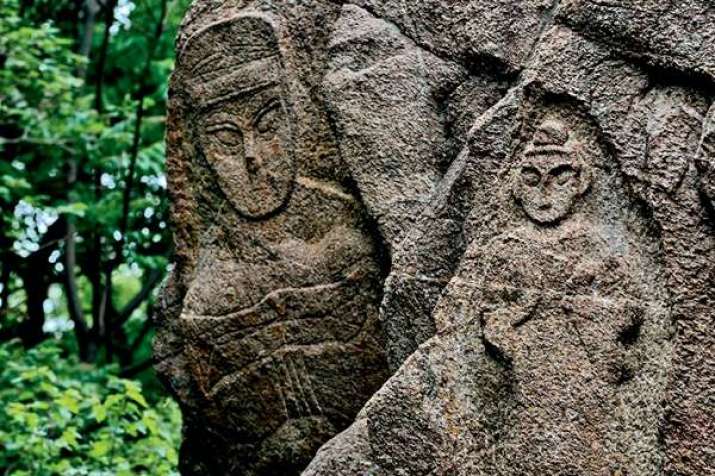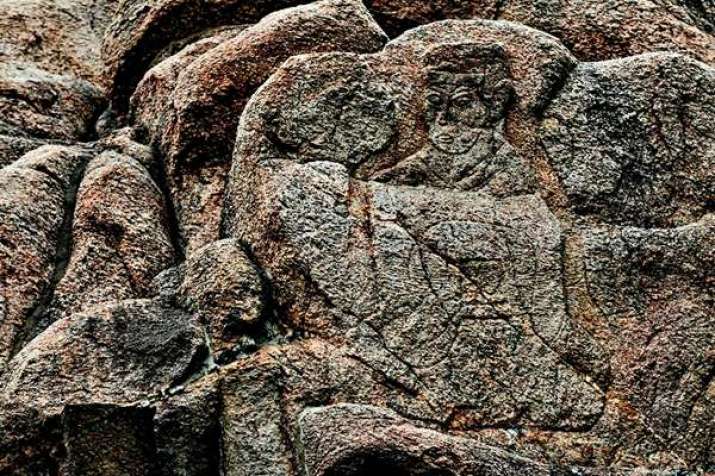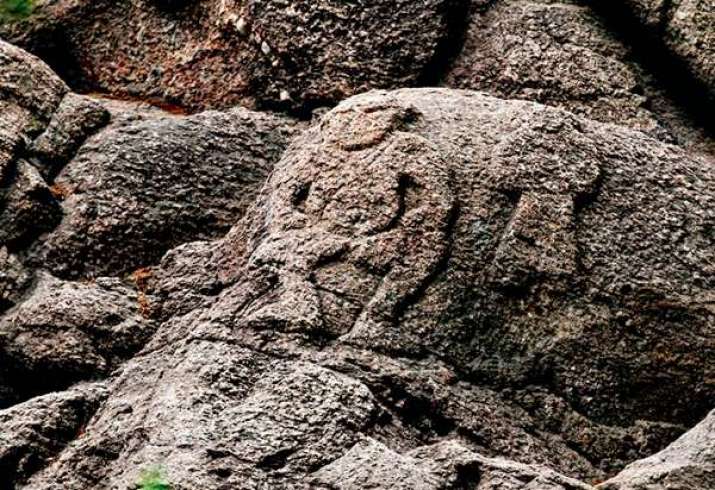NEWS
1,800-year-old Buddhist Carvings in Lianyungang Bridge the Past and Future of the Silk Road
 A carving of the Buddha on Kongwang Hill. From chinatoday.com.cn
A carving of the Buddha on Kongwang Hill. From chinatoday.com.cnA rare collection of Buddhist carvings dating to the Eastern Han dynasty (25–220 CE) on a hill near the Chinese port city of Lianyungang serves as a lasting record of the arrival of Buddhism in China along the maritime Silk Road. They also offer a tangible link between those ancient trade routes and modern China’s ambitions to draw upon this legacy through the economic and trade development initiative known as “One Belt, One Road”—a plan to resurrect the Silk Road for the 21st century.
Kongwang Hill has played a prominent role in the history of this port city in northeastern Jiangsu Province. According to local legend, the great philosopher Confucius once stood upon the hilltop some 2,500 years ago to admire its expansive view of coastal region. The hill was subsequently dubbed Kongwang, meaning “Confucius (Kong Zi in Chinese) Contemplates.” At the summit lies a fascinating collection of 1,800-year-old rock carvings etched into the yellow rock. A mix of Buddhist and Taoist imagery and ranging in size from a few centimeters to several meters, these 105 carvings offer a telling insight into the origins of Buddhism in China.
“The positions of the images and the carving techniques clearly reflect the Han style: full use of high relief and engraving with convex lines,” explained Gao Feng, deputy director of the Haizhou District Tourism Department. In 1980, scholars determined that the Kongwang Buddhist carvings were created during the late Eastern Han dynasty, making them some 200 years older than the famed Mogao Grottoes in Dunhuang, Gansu Province. (China Today)
 Centuries of weathering have erased many of the original features. From chinatoday.com.cn
Centuries of weathering have erased many of the original features. From chinatoday.com.cnIn parallel with its introduction via overland Silk Road routes, Buddhism also reached China from India along with ocean-borne trade. The obsessive search for an elixir of immortality by Qin Shi Huang (r. 247–220 BCE), the first emperor of the Qin dynasty (221–206 BCE) led to seaborne expeditions that opened up navigation routes from eastern China, forerunners of the Maritime Silk Road. Seeking the mythical elixir, these first expeditionary fleets pioneered shipping routes that would open the way for merchant ships to follow bearing Chinese silk and porcelain from Lianyungang to Japan, the Korean Peninsula, India, and Sri Lanka. Unlocking the channels for commercial and cultural exchange as far afield as the ancient Arab world, those trading ships in turn brought back to China, among other wares and influences, Buddhism.
Opposite the venerable Buddhist carvings, stands an elephant fashioned in stone, each of its four feet planted upon a lotus. Inside the elephant’s left foreleg is the inscription: “Fourth month of the fourth year of the reign of Yongping,” indicating that the sculpture was created during the reign of Liu Zhuang (r. 58–75 CE), second emperor of the Eastern Han dynasty. “Both the elephant and the lotus flower are closely related to Buddhism,” noted Gao Feng. “They say that Shakyamuni Buddha rode an elephant before he was reincarnated. After his rebirth, Shakyamuni stepped on lotus flowers.” (China Today)
Recalling this ancient heritage, Lianyungang has now become a key port and component of Chinese president Xi Jinping’s ambitious economic and trade development initiative known as “One Belt, One Road.” The central government’s strategy to improve links with its neighbors across Eurasia includes massive investment in rail links, roads, oil pipelines, and maritime infrastructure. In addition, more than 30 cultural centers are planned in various countries along the original Silk Road routes by 2020.
“The ancient silk roads are not just routes of trade, but routes of friendship,” Xi has said. (Yibada)
 A bridge between the past and the future. From chinatoday.com.cn
A bridge between the past and the future. From chinatoday.com.cnTaking its name from the lucrative trade in Chinese silks that was conducted along its length, beginning during the Han dynasty (207 BCE–220 CE), the Silk Road was key to cultural as well as commercial interaction throughout Asia and as far west as the Mediterranean Sea. Trade on the Silk Road was a significant factor in the development of civilizations in China, the Indian subcontinent, Persia, Africa, and Arabia, and also led to cultural exchanges and the spread of syncretic philosophies and religious thought.
See more
Silent witnesses to emergence of Maritime Silk Road (China Today)
China Plans to Invest £4 Trillion to Revive Silk Road, Other Forgotten Wonders (Yibada)
KONG WANG MOUNTAIN (Roam China)
Related news from Buddhistdoor Global
Dunhuang Airport to Close for Expansion as Popularity of Mogao Caves Takes Off
Record Tourist Numbers Threaten Ancient Buddhist Art in China’s Mogao Caves
Ancient Hygiene Habits Show Silk Road Facilitated Passage of Disease, as Well as Commerce and Buddhism
Archaeological Find Reveals New Silk Road Route
Related features from Buddhistdoor Global
Buddhistdoor View: Buddhist Hopes for China’s Silk Road Initiative














